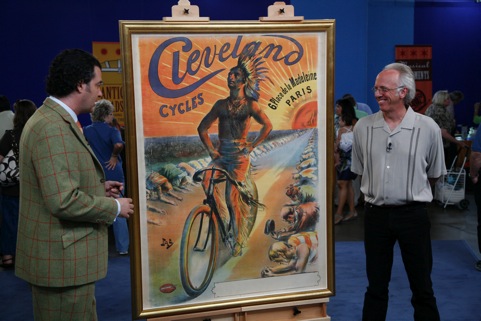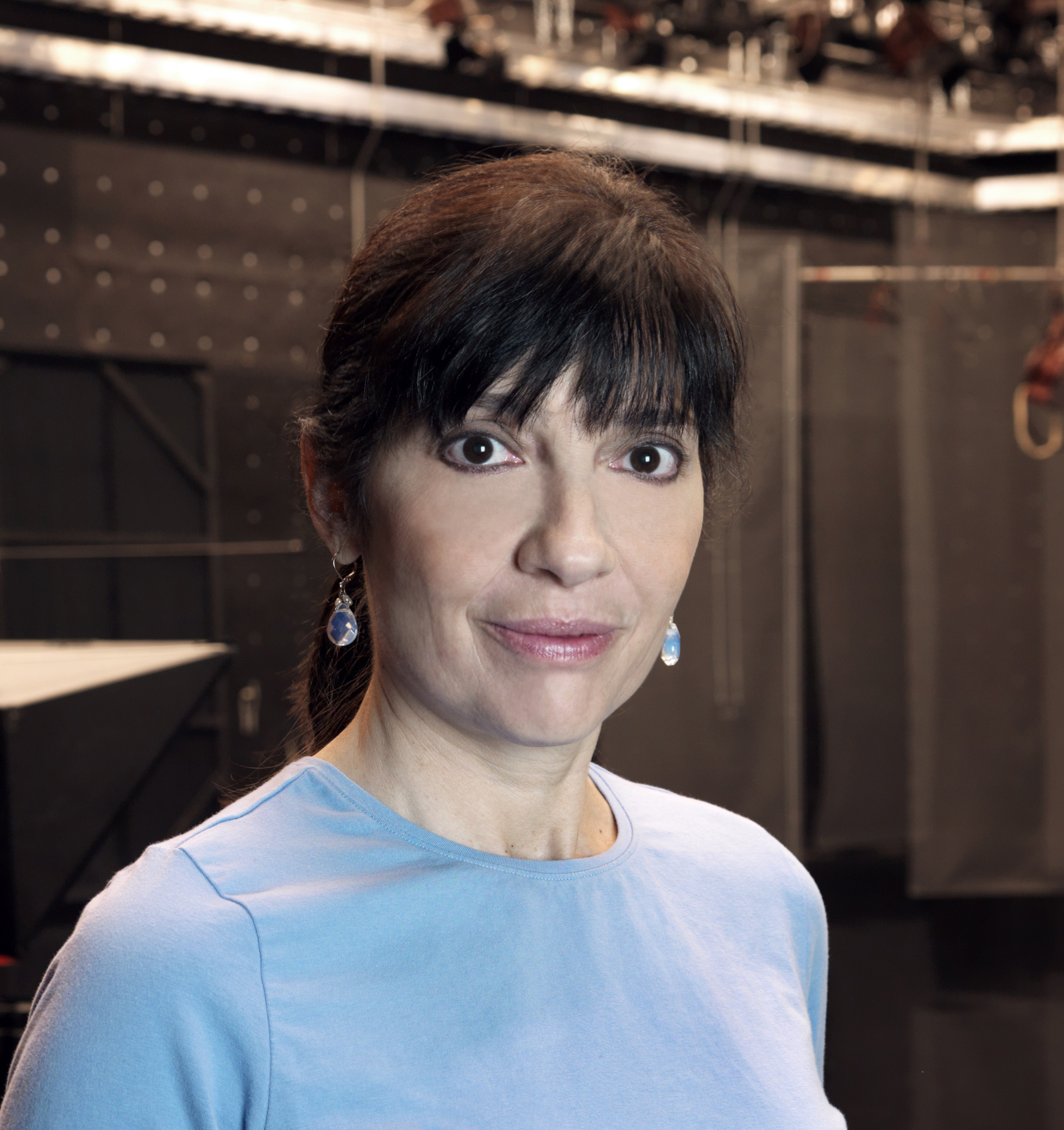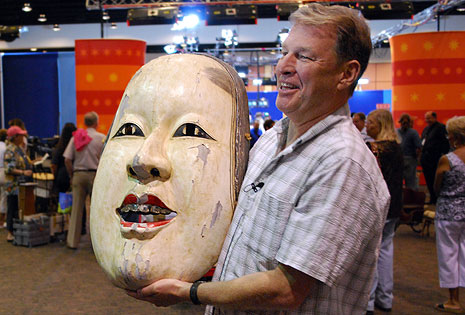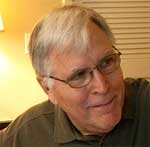Bianculli here: TV critics are like treasure hunters, sifting through mounds of worthless junk in search of the occasional sparkling treasure. No wonder contributing writer Tom Brinkmoeller finds lots to like about the long-running PBS series Antiques Roadshow...

Waiting in Roadshow Line Sometimes Pays Off
Maybe the most impressive fact about Antiques Roadshow isn't that it still finds amazing treasures after 13 seasons, or that it has been the highest-rated PBS weekly series since its second season on the air, regularly attracting 10 million viewers.
It just may be that, having set up in more than 90 halls over that time, and having done thousands of appraisals during each stop, not once has an appraiser broken an object, the producers report. Not one piece of glass that got slippery while being held more than an hour in the nervous hands of its hopeful owner. Not one brittle piece of antique paper kept in the family for hundreds of years. Not a fragile carving that's older than this country.
It's truly an unbroken record.
Rarely, viewers will hear something break off-camera, said Marsha Bemko, executive producer of the series since Season 5. But that's been at the hands of the owners, she said, and never anything valuable.

Bemko knows a lot more than that about Antiques Roadshow -- so much, in fact, that she has turned her knowledge into a 256-page book, Antiques Roadshow Behind the Scenes, to be published in November. Bemko happily shares some of her fun facts from the road: The most six-figure appraisals were in Palm Springs, Calif., followed by Baltimore. People used to camp out during the first four seasons of the show, hoping to get in ("We had people sleeping out overnight," Bemko said). In 2000, the WGBH production staff started handing out appointment times, with 3,200 tickets available for each city. The most ticket requests were for the Raleigh, N.C., show (34,000); the easiest ticket was in Phoenix (20,000).
Shows are shot on Saturdays, when the doors open at 8 a.m, and it's at least 11 or 12 hours before the sets are struck and the hall is empty again. Most of the Roadshow crew of about 45 people arrive in the host city on Thursday and return home Sunday. While there, they're joined by 15 local crew members and 110 volunteers (each of whom receives lunch, a T-shirt and an appraisal in appreciation).
The appraisers always pay their own expenses, and out of a pool of 150 appraisers, 75 attend each show. Most arrive the day before, but some come in early to socialize with each other. Antiques Roadshow has helped tear down a wall: Employees of Sotheby's and Christie's had historically avoided each other. "We've changed that, they tell us," Bemko said. "We've become something like a summer camp for grownups."

People bring their would-be valuables for three reasons, she said -- to learn about the object; hoping to hear it's valuable (usually, it's not); and/or to be on television. When an appraiser sees something that seems worth an on-air appearance, Bemko or another producer is called in to make a ruling. The guest is never told if the object is valuable or not. Each appraisal takes at least 10 minutes to shoot.
Over the course of a day, 55 formal appraisals will be shot; 30 more will be shorter versions done at the appraisal table. Of those, up to 60 will show up in the three shows made from each Roadshow visit. In all cases, the show's producers refrain from revealing the owner's last name (though guests sometimes do so themselves).
"Most of our guests do not sell their objects. We ask them to let us know if they do anything. In most cases, it's not about the money," Bemko said of people who bring in family heirlooms. The sale ratio is a bit higher if the appraised object has been found at a yard sale or trash bin.
There was also a spinoff show, Antiques Roadshow FYI, which followed the stories of appraised items later sold. (It lasted just one year because underwriting couldn't be found.) Expanded information about some of the objects is available on the Roadshow web site.
---------

For a number of years, Tom Brinkmoeller was paid to watch and write about television. That seemingly ideal situation can't match his current one: watching only what he enjoys -- especially in the lesser-hyped areas of television, where he finds some wonderful gems. Sharing those finds is even more fun than watching.